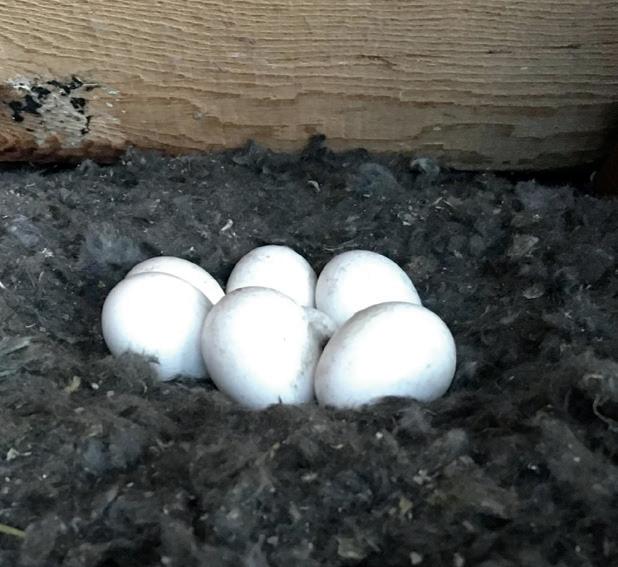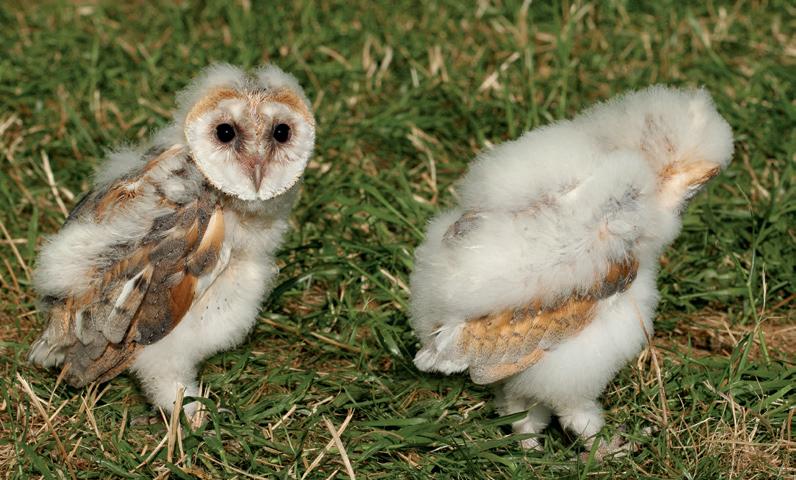
3 minute read
The Perfect Homemaker
Barn Owls are not only stunning birds to see, with their unique facial disks and coloring, but they also possess many characteristics that make them interesting to study. From choosing the ideal nest in which to lay their eggs to the lethal efficiency of their hunting prowess, Barn Owls’ place in the skies above us is secured by some remarkable features.
Habits
HABIT hab·it \ ’ha-bət\ noun A behavior pattern acquired by frequent repetition or physiologic exposure that shows itself in regularity or increased facility of performance,
The Perfect Homemaker
Barn Owls are able to choose homes that meet their specific needs for safety, access to food, and as much shelter from weather elements as possible. A typical Barn Owl nest consists of a safe platform where eggs can be laid in a small area, decorated by debris such as feathers and pellets that the female has vomited around the nest. Additionally, the male will come and begin stacking up food around the nest that the female owl will consume until the eggs have hatched. Then she will tear pieces of prey to feed her young. When they are old enough, the young chicks will begin ingesting prey whole. Since they have a tremendous reproduction capacity, the owls need to eat constantly. In some regions, it is possible to observe them nesting year-round, raising as many as four clutches. Barn Owls in the most populated areas of the Southwest and Northwest United States begin selecting nesting sites in December or January. The nesting season is typically from February to May, with peak hatches in April. Occasionally, new nests may be started as late as March.

By July, most nest sites have been vacated by the young, who have fledged (flown) to nearby trees or buildings for the final stages of their development. A second nest for the season with the same mate may be started in the same or in a different location. The owls may have different mates during subsequent mating seasons. Males may have two mates at the same time, nesting as much as a mile apart during a single season if there is a shortage of males in the area. The clutch size varies, and commonly has as many as eight eggs. Up to 15 eggs have been seen in several nests. One case in Texas records an extraordinary clutch containing 27 eggs in a single nest box. Even more amazing is that all the owls survived beyond the juvenile period, 18 weeks. The hen (female) lays one egg every two or three days and begins incubating immediately after the first egg is laid. The eggs are incubated for 30 to 33 days each. The chicks hatch in the order in which they were laid, which results in siblings with as much as a two week age difference. It is always an interesting sight to see a more developed owlet with a younger sibling that just hatched from its egg. During the incubation period, the female remains on the eggs almost continuously. She is fed by the male, but nevertheless, loses much of her stored fat. While nesting, the hen often becomes skittish and restless. During this time she is reluctant to leave the nest unguarded. If she is forced to flee in a state of panic and fear, she may abandon the nest. For this reason, it is wise not to disturb a nesting hen during the early part of the breeding season in order to protect the unhatched young owlets.









